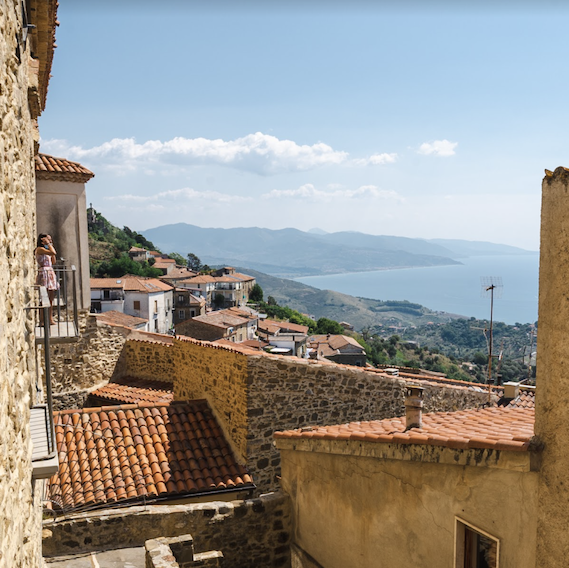Pollica, Cilento, Italy
UNESCO emblematic community of the Mediterranean Diet.
Cilento is located in the heart of the Mediterranean, surrounded by reserves of biological and cultural diversity unique in the world, which have contributed to the formation of the ‘ecological’ identity that distinguishes it.
An ecological identity and a respect both for Nature and for the Human that has always been central to this community, and that can be found in many aspects. First of all, in the knowledge and in the respect of the land.
The agricultural practices represent a way in which the people take care of the landscape of the territory. One example is the ancient grazing technique that the shepherds of the area used to put in practice. Cervati Mount, the highest point in the Campania region, was once managed through an oral code of conduct, based on common trust among shepherds and common management of the grazing. The shepherds used to walk with a small pouch and every time they encountered trees of Pera Lardara (a typical Pear tree from Cilento) with bigger fruits, they collected and kept small branches of the plant and created the graft, to ensure all the community could benefit from the larger fruits.
The respect of the land is also represented by the constitution of the Bio-district of Cilento in 2011. The Bio-district is a territory of a sub-regional level with a non profit association in which all the actors of the food system participate according to the principles and methods of organic production and consumption. They work also as a platform to strengthen the practices in place through a coordination strategy for development and continuous innovation, with an exchange of information and experiences. The Bio-district also sustains the practices through supporting political capacity at the local, national, and international levels.

The Bio-district is located in the National park of Cilento, Vallo di Diano and Alburni, which covers an area of 3,196 square kilometres and includes 38 municipalities, 400 organic farms and three major archaeological and cultural sites (Paestum, Padula and Elea-Velia). The National Park of the Cilento and Vallo di Diano has been included in the UNESCO list of World Heritage Sites since 1998.
The respect for Nature is clearly reflected in the respect for Humans. Pollica and the neighboring villages were characterized by a high rate of longevity: this was an area where people could live until 100 years and more! It was because of this peculiar aspect that Ancel and Margaret Keys, two researchers and nutritionists from the United States, in the ‘70s came to Pollica to study this phenomenon. The result of the study was the conception of the expression “Mediterranean Diet,” representing not only a series of culinary intakes but a way of life.
A way of life that is perfectly represented by the Ladies of the Mediterranean Diet: these are the grandmothers who sustain the community and are the symbol of this way of life. Through their presence and work, they are the ones that can pass the local heritage to the next generations. The acknowledgment of this “silent work” is represented by the recognition on the 16 November 2010 in Nairobi, when 166 UNESCO member states unanimously voted to nominate the Mediterranean Diet as an Intangible Heritage of Humanity, based on a proposal made by Italy, Spain, Greece and Morocco, as it is much more than just a list of foods. A recognition strongly wished and pushed by Angelo Vassallo, the “fisherman mayor” and historical mayor of Pollica, who worked hard for it and to let Pollica become a symbol of ecology, biodiversity and respect for Humans and Nature.

Mediterranean Diet Study Center "Angelo Vassallo"
In February 2011, on the occasion of the first intergovernmental meeting of the UNESCO Emblematic Communities, the Study Center was recognized as an International Research Center for the Mediterranean Diet by the participating delegations.
It is the seat of the European Group for Territorial Cooperation (EGTC), to promote cultural, scientific, and economic relations and exchanges between the communities representing the Mediterranean diet mentioned in the official UNESCO inscription and the other communities of the Mediterranean basin through the strengthening of exchanges and common actions at interregional and international levels. Along with the Living Museum of the Mediterranean Diet of the Municipality of Pollica, it is a place of dissemination and deepening of the principles of the Mediterranean lifestyle.
The Mediterranean Diet is about sharing and conviviality with food only a pretext for gatherings, thus providing opportunities to transmit knowledge and values within diverse communities.
